Name |
Affiliation |
Approximate Date and
Apparent Role |
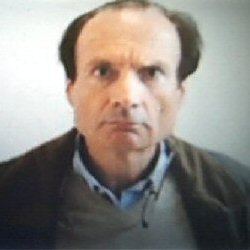
Andrea Rossi (Image: M. Lewan)
|
Leonardo Corp. (Registered in New Hampshire and Florida) |
2007 - Rossi approaches Francesco Piantelli, a retired professor of biophysics from the University of Siena. In 1989, Piantelli had discovered the nickel-hydrogen gas low-energy nuclear reaction method. Piantelli declines Rossi's offer to collaborate.
|

Sergio Focardi (Image: S. Krivit)
|
Professor of physics, University of Bologna (retired) |
2007 -
Rossi meets and gains the confidence of Focardi, who is retired and never achieved the success and recognition he wanted for his LENR research. Focardi is eager for a second chance and begins collaboration with Rossi. There is no evidence that Focardi ever had any hands-on involvement in Rossi’s Energy Catalyzer work. Focardi's role appears to have been only a passive adviser to Rossi.
On April 22, 2011, Focardi told the Italian news media, "Though I should not be the one to say, this is the biggest scientific discovery in the history of mankind."
|
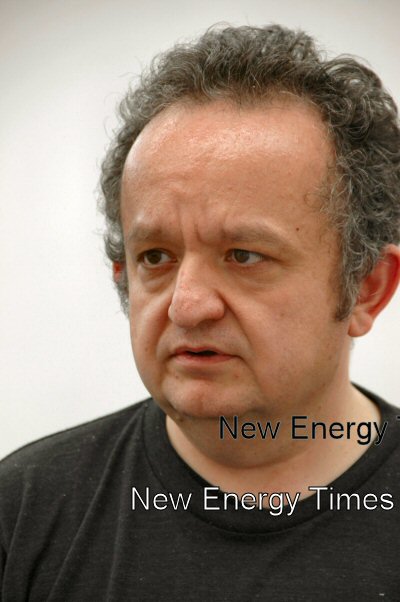
Giuseppe Levi (Image: S. Krivit)
|
Professor of physics, University of Bologna |
2009 or 2010 - Levi hears about the Rossi device from Focardi. Levi has confidence in Focardi, so he becomes interested. On Dec. 16, 2010,
Levi sees the Energy Catalyzer for the first time and, after Levi performs a cursory test, believes it is performing as Rossi claimed. Levi is on Rossi's Board of Advisers at the time of the Jan. 14, 2011, press conference and demonstration. |
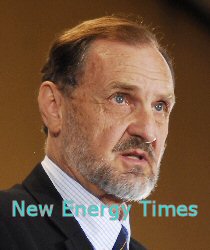
Michael Melich (Image: Duy Tran) |
Research professor, U.S. Naval Postgraduate School |
2009 - According to Rossi, he meets Melich and his wife, Marianne Macy. On Jan. 19, 2011, Melich and Macy publish promotional reports in support of Rossi's claim. Melich has been involved in promoting "cold fusion" and acquiring technical information on the topic since 1989. Melich was on Rossi's Board of Advisers at the time of the Jan. 14, 2011, press conference and demonstration. |
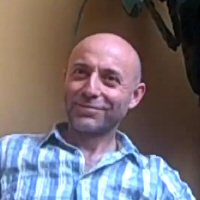
Daniele Passerini (Image: S. Krivit)
|
Blogger, 22 Passi |
February 2010 - Passerini hears about the Rossi device from Levi, his "highly credible source and longtime friend." Levi and Passerini's friendship goes back to their childhoods. |
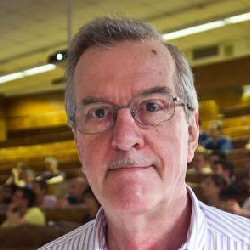
Paolo Capiluppi (Image: Schicchi) |
Director of Physics Department, University of Bologna |
Capiluppi and other members of the Physics Department hear about the Rossi device from Focardi and Levi. They have confidence in Focardi and Levi, so they become interested. Rossi's promise of $500,000 Euro to the Physics Department also helps to gain Capiluppi's interest.
Capiluppi, along with several members of the department, attends Rossi's Jan. 14, 2011, demonstration.
According to Levi, Capiluppi helps edit the Jan. 11, 2011, press release and is fully informed about Rossi’s excess-heat claim.
On June 8, 2011, the public affairs officer for the university writes that the press release "was made by the Physics Department." A day later, after the officer speaks with Capiluppi, the officer says the press release was not made by the department.
|
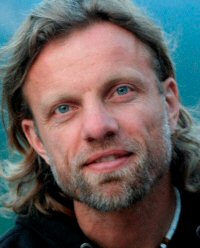
Mats Lewan |
Technology journalist, Ny Teknik |
Jan. 20, 2011 - Lewan writes his first article on the Rossi story. On Jan. 24, Lewan writes another article and states that the University of Bologna scientific observers who attended the demonstration found no hidden energy sources for the claimed excess heat.
Lewan does not mention that the observers also failed to see the production of large amounts of high-temperature steam vapor. Lewan does not write that Rossi was obscuring liquid-phase water output from the device and feeding the lower-temperature fluid water down through a hole in the wall.
Lewan often fails to fact-check important information. (Example: Jan. 29, 2011, Lewan writes, "First deliveries [of Rossi's Energy Catalyzer] will start within three months, and mass production will start by the end of 2011.") (Example: March 10, 2011, Lewan writes, "[Rossi] is now paying 500,000 Euros to the Physics Department of Bologna University, following a new agreement.") Lewan fails to require evidence of scientific data before reporting it as news. (Example, Feb. 23, 2011, Lewan quotes Levi, "Minimum power was 15 kilowatts, and that’s a conservative value.") Lewan fails to remain objective and independent (Example: May 2, 2011, Lewan takes his own data from Rossi's device and reports it as part of his news story. (Example: Oct. 6, 2011, Lewan again takes his own data and this time writes a technical report on Rossi's device and bases his news story on his own report.)
|
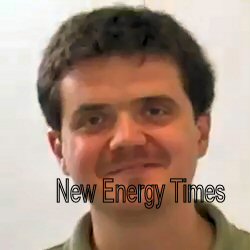
David Bianchini (Image: S. Krivit)
|
Student, University of Bologna |
Jan. 21, 2011 - Levi and Bianchini publish energy and radiation reports of their evaluation of Rossi's Jan. 14, 2011, demonstration on Rossi's so-called "Journal of Nuclear Physics" blog. |
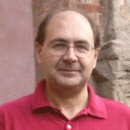 Mauro Villa Mauro Villa
|
Professor of physics, University of Bologna |
Villa publishes a gamma-emission report of his evaluation of Rossi's Jan. 14, 2011, demonstration on Rossi's blog. |
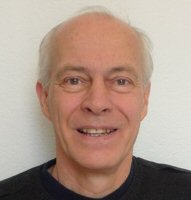
Hanno Essén
|
Theoretical physicist and lecturer at the Swedish Royal Institute of Technology, former chairman of the Swedish Skeptics Association |
Jan. 21, 2011 - Lewan gains Essén's interest. Essén has a theory that he thinks can explain Rossi's claim. Essén had proposed a "cold fusion" theory in 2006 but, according to Essén, "it was met with silence." Essén assumes technical honesty and competent measurements of excess heat and believes Rossi's claim without seeing the device and without seeing a published paper. |
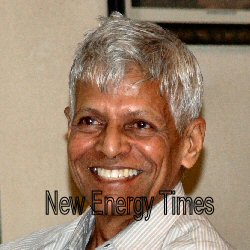 Mahadeva Srinivasan Mahadeva Srinivasan (Image: S. Krivit)
|
Associate director of Physics Group, Bhabha Atomic Research Centre, (retired) |
Srinivasan is chairman of the 16th International Conference on Condensed Matter Nuclear Science. He believes the Rossi demonstration and self-published paper are scientifically credible and so important that he adds two presentations about the Rossi device to the published schedule two weeks before the Feb. 6-10, 2011, conference.
On Dec. 21, 2011, Srinivasan tells New Energy Times that he thinks Rossi's device brings Srinivasan vindication for his historic struggle for scientific acceptance of "cold fusion" in India. |
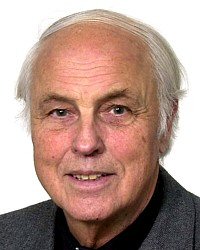
Sven Kullander |
Professor emeritus, Uppsala University and chairman of the Swedish National Academy of Sciences Energy Committee |
Essén and Kullander
hear about Levi's confirmation of the Rossi device from Lewan. Essén and Kullander base their initial technical confidence about Rossi’s claims on Levi's favorable evaluation.
Before Kullander has seen Rossi's device, Kullander goes on record stating that the public must embrace the Rossi claims. Kullander thinks Rossi and Focardi use a "fairly scientific approach." Kullander says that, "above all, they have heated a building and have done so for one year (according to Rossi) and have
run the experiment for 10 hours without any electricity other than 80 watts to power the instruments."
Rossi invites Essén and Kullander, at Rossi's expense, to observe an experimental demonstration
of the Energy Catalyzer excess -heat production on
March 29, 2011. Essén and Kullander ignore the fact that they do not see any production of large amounts of extremely hot steam.
In addition, they pay little attention to that fact that Rossi is obscuring the lower-temperature, liquid-phase water output from the device and that Rossi is feeding the output through an opaque plastic tube down into a plumbing drain pipe in the building through a hole in the wall.
Essén and Kullander become convinced that Rossi's claim is real.
On April 3, 2011, they publish their technical report on Ny Teknik and conclude: "Any chemical process for producing 25 kWh from any fuel in a 50 cm3 container can be ruled out. The only alternative explanation is that there is some kind of a nuclear process that gives rise to the measured energy production."
|
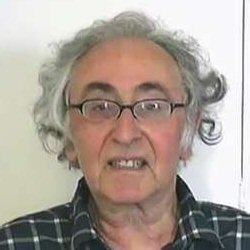
Brian Josephson
|
Nobel Prize-winner and professor of physics at Cambridge University (retired) |
On June 24, 2011, Brian Josephson publishes a video that endorses and promotes Rossi and his device. |
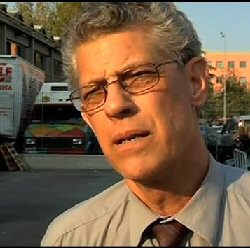 Roland Pettersson Roland Pettersson |
Analytical chemist, Uppsala University (retired) |
On Oct. 6, 2011, Pettersson goes on record to support Rossi's claim even though Pettersson knows that the two thermocouples Rossi uses that are fundamental to his claim are incorrectly placed. The misplacement prevents accurate measurements of any excess heat from the device.
On Feb. 20, 2012, Pettersson sees the Rossi device again. The incorrectly placed thermocouple locations are unchanged. Nevertheless, Pettersson's confidence in Rossi's claim remains. Pettersson tells New Energy Times that he thinks Rossi’s device provides validation for his group’s fusion research.
In 2005, Pettersson, Hidetsugu Ikegami and Lars Einarsson published "Observation of enormously enhanced nuclear fusion in metallic Li liquid." That research was sponsored by Sven Kullander.
|
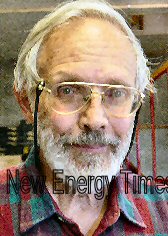
Edmund Storms (Image: S. Krivit)
|
Radiochemist, Los Alamos National Laboratory (retired) |
On Nov. 17, 2011, Storms writes to an Internet e-mail list, "From my study of the Rossi claims, the possibility of this being fraud is zero. The possibility of it being real is 100%. The possibility of it being a successful product at this stage is 25%. Therefore, failure of the community to support Rossi would be contrary to everything the community has been trying to accomplish and contrary to the future of the world with respect to finding a clean energy. The stakes are too high to play games." |

Rob Duncan
|
Vice chancellor for research, University of Missouri |
On Feb. 11, 2012, Duncan announces his intention to purchase two of Rossi’s Energy Catalyzers. On Feb. 18, 2012, Duncan changes his mind. |
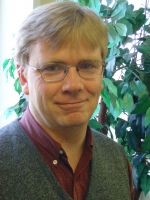
Frank Ackland
|
Web master of E-Catworld.com, the last of the E-Cat tribe (down from 80) that believed in and promoted Andrea Rossi's E-Cat scam.
|
|

